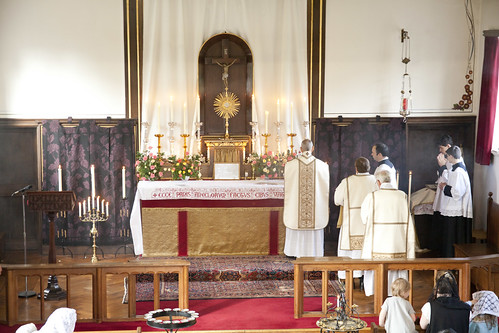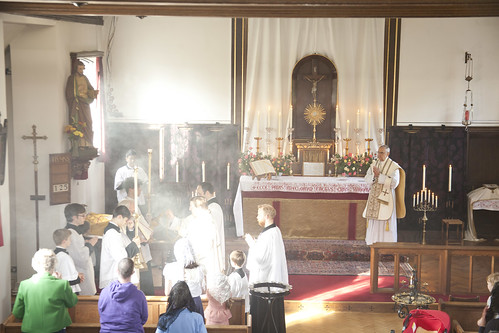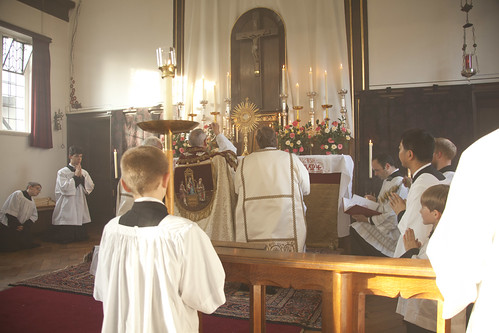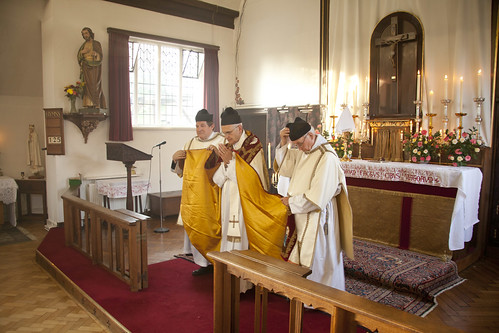Last Thursday I attended the EF Low Mass for Corpus Christi at the Oxford Oratory at lunchtime, and then went to the 6pm High Mass at SS Gregory and Augustine.
This High Mass was celebrated in the Presence of the
Blessed Sacrament exposed, and it concluded a celebration of the parish's Forty Hours Devotion. The Mass was followed by a procession round the grounds and along the side of Woodstock road and with other traditional devotions.
It was a splendid a celebration of Mass in what is a small church, with the attendant logistical problems.
Images: LMS Chairman's blog
Yesterday was a beautiful, sunny day for the fifteenth annual North Oxford Deanery Corpus Christi Procession. These photographs are all from the account on the Oxford Oratory's website, with some additional comments I have added.
Many people contributed to making the procession a great success. The marshals were briefed about keeping us safe - as readers can see I was again habited in the distictive garb of such an esteemed person:
The congregation was briefed by the Provost, Fr Daniel:
Members of the congregation are encouraged to wear their academic dress, as can be seen here:
The Dean, Fr John Hancock, flanked by two permanent Deacons carried the Blessed Sacrament from the Oratory to Blackfriars:
The procession leaves the church. Seminarians from the Ordinariate were amongst those serving:
The procession passes along St Giles, and can be seen here passing Pusey House. We were joined by some Benedictines:
The children who had made their First Holy Communion this weekend scattered rose petals before the Blessed Sacrament. The petals were in profusion as flowers from a wedding on Saturday at the Oratory were re-cycled:
We alternated between saying the Rosary and singing Eucharistic hymns, accompanied by the Witney Town Band. Fr Daniel led the saying of the Rosary, and is usual on this occasion, looked a bit like a Mafia Priest...:
The canopy over the monstrance was carried by the Conventual Franciscan Friars who are currently establishing themselves in Oxford:
At Blackfriars the Dominican friars sang the Lauda Sion and Fr Robert Ombres, O.P. preached a fine sermon. This Dominican appears to be wondering if everyone will fit into the church - we did n't quite:
Fr Ombres then carried Our Lord along part of Cornmarket and up St Michael's Street:
The band and the procession in St Michael's Street:
Fr Dushan Croos, S.J., Chaplain to the University of Oxford, then carried the Blessed Sacrament to the Chaplaincy:
The procession crosses Queen Street, goes down St Ebbe's Street and into Rose Place:
At the Old Palace, the Dean gave Benediction, before the singing of the Salve Regina and Faith of our Fathers:
We then concluded with some very welcome refreshments!
This was a very successful occasion - as indeed it always is - and a striking act of witness to the city of Oxford of the Catholic faith and devotion to Our Lord in the Blessed Sacrament.



























